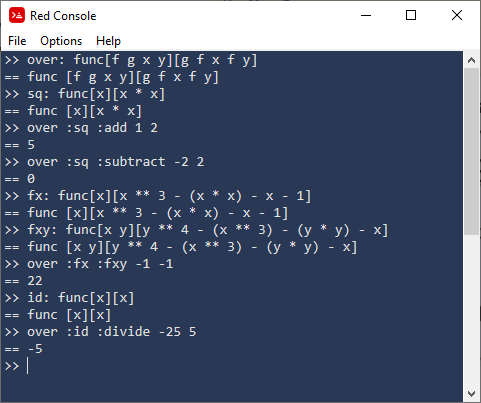Over is a higher-order function in multiple languages such as APL (⍥). It takes 2 functions and 2 values as arguments, applies the first function to both values, then applies the second to their result. For example, using ⍥ to represent Over:
1 ²⍥+ 2
We would first calculate ² of each argument: 1² = 1 and 2² = 4. We then apply + to these, yielding 5.
You are to take as input:
- A black box function, \$f\$, which takes an integer as input and returns an integer
- A black box function, \$g\$, which takes 2 integers as input and returns a single integer
- 2 integers, \$a\$ and \$b\$.
You should then return the result of \$g(f(a), f(b))\$.
If you have a builtin specifically for this (e.g. APL's ⍥, Husk's ¤ etc.), consider including a non-builtin answer as well. It might even get you an upvote :)
You may input and output in the most convenient format for your language, and in any convenient method, including taking \$a\$ and \$b\$ as a pair/list/tuple [a, b]
For the sake of simplicity, you can assume that the black-box function will always input and output integers within your language's integer domain, and that \$a\$, \$b\$ and the output will be with your language's integer domain.
This is code-golf, so the shortest code in bytes wins
Test cases
f
g
a, b -> out
f(x) = x²
g(x,y) = x - y
-2, 2 -> 0
f(x) = φ(x) (Euler totient function)
g(x,y) = 2x + y
5, 9 -> 14
f(x) = x³-x²-x-1
g(x,y) = y⁴-x³-y²-x
-1, -1 -> 22
f(x) = x
g(x,y) = x / y (Integer division)
-25, 5 -> -5


a&bas an array[a,b]? \$\endgroup\$